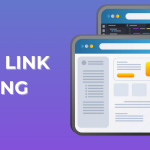Table Of Content
Domain Rating can be incredibly useful when making informed decisions about SEO, but if you don’t understand the metrics very well, they may lead you astray. So, in this article, we will explore all the facets of the DR and provide suggestions on how you can improve your DR.
This blog emphatically explores what domain rating (DR) is and why it is significant for business growth. Simultaneously, we will explore how search engines are hinged on domain rating in 2025.
Keep reading to learn what domain rating is, how we calculate it, and what the right ways to improve it are. There are many tentative methods to improve DR. However, we will be concerned with the 3 methods that most SEO mapping sites usually use.
What Is Domain Rating?

Domain Rating is another important SEO indicator that is used to determine the reputation and calibre of a website.
Like other metrics, the DR assigns a number to a website’s domain quality, ranging from 0 to 100. This measuring tool is a part of Ahrefs, a well-known website that many SEO experts visit.
You can presume that domain rating is street cred for your brand website online. A high rating implies that you have the trust of other websites. Therefore, they want to link to your web pages. The links help search engines like Google to determine whether your site is credible.
DR is a metric created on Ahrefs. Now, it has widespread applications across SEO. However, you must know that Google doesn’t consider DR a direct ranking factor for websites. Instead, you can think of it as a clear indicator of how compatible and authoritative your website is.
Why Is Domain Rating Important?
Website authority, often known as domain rating, is an SEO concept used to assess the strength of a specific campaign.
Ahrefs devised a ranking statistic called domain rating to indicate the strength of a website’s backlink profile compared to others in their database. We use Ahrefs to monitor our keyword rankings and SEO performance.
The ranking gives you points out of 100 based on the number and kind of links you receive from other domains.
For marketers, domain rating is a crucial indicator as it provides insight into the calibre of their backlink profile. It could also have a direct impact on your traffic and rankings.
According to Ahrefs, DR is a relative word in the sense that it is determined not only by the number of high-domain rating sites that link to you but also by how many other websites these sites link to.
Let’s clarify with a little example.
Website A links to 1,000 other websites and has an 80-domain rating. Although Website B only links to 500 websites, it, too, has an 80-domain rating. As per Ahrefs, a link from Website B is more effective than one from Website A.
How To Measure Domain Rating?
Domain Rating represents the total strength of a website’s backlink profile or, to put it another way, how credible search engines consider it to be.
This Is How Ahrefs Calculates DR:
- Finding Linking Domains: They locate all domains that point to the target website, including links that are followed and which are thought to be the most useful connections.
- Linking Domain Strength Analysis: Each linking domain’s DR is considered. A high-DR website passes more “link juice” (ranking power) to you than a low-DR one.
- Link Juice Distribution: A percentage of the connecting domain’s DR is delivered to the target website after being split by the number of domains it connects to.
| Example: Assume 20 backlinks from domains with an average DR of 40 points to your website (X). Your DR may be calculated by Ahrefs as follows: |
|---|
| (Average DR of Linking Websites) * Total Link Juice Quantity of Backlinks Link Juice Total = (40) * (20) 800 is the total link juice. |
But because DR is a logarithmic scale, it gets tougher to raise your score the higher it is. Thus, rather than 800, your website (X) may have a DR of 45.
Recall that DR is a relative measurement. A “good” DR varies depending on your sector and rivals. Concentrate on obtaining high-quality backlinks from pertinent websites to see a gradual increase in your domain authority and enhance your potential for search engine ranking.
How You Can Increase Your Website’s DR?
There are two ways to increase the DR of your website, but remember that both tools require time, and the results may not appear quickly.
The disparity in the outcomes depends upon your quantity, quality, and consistency in producing high-quality content or creating a link-building campaign, among other factors like the competition’s activities and the user experience.
Stated That The Following Are The Primary Steps To Boost DR:
- Emphasize quality, not quantity.
- Your DR improves when you get backlinks from other high DR sites.
- Request backlinks from a wide range of trusted websites. Increasing backlinks from multiple domains adds strength to your profile.
- Make good-quality content so that you get higher backlink requests.
- Some useful content suggestions are case studies, detailed guides, statistical articles, etc.
- Focus more on guest blogging and partnerships.
- Audit frequently and delete the toxic hyperlinks.
- Leverage more PR and social proof.
- Remember, search engines like well-framed and fresh content.
Breaking Down 5 Actionable Strategies
Generating a greater number of “followed” links for your website is indispensable for increasing your domain rating. However, there is a catch. The site from where you get the link must have a high domain rating itself.
Otherwise, its link will have almost no traction in terms of domain rating on your website. Barring this individual approach of improving DR, there are a few easy, actionable steps to increase your website’s DR indirectly-
1. Create Powerful Content That People Would Want To Link To
People mainly focus on three parameters while choosing their content for linking. Firstly, people prefer to link with non-commercial pages, which are not only concerned about making money. As a result, you will rarely find links redirecting to sales pages or affiliate review pages or vice versa.
In addition, your content is likely to attract links if it’s centred around utility factors. For example, a guiding article, a calculator or step step-by-step guide to any tools.
Lastly, people would be eager to link to your content when your topic theme/idea has a genuine history of getting links organically to your site. How can you verify that?
Simply install the SEO toolbar of any reliable vendor. Then search on Google for the theme or content idea you have. Finally, check the number of referring domains to the best ranking pages.
2. Pitching Only Relevant And High Authority Websites
Nobody would be eager to link to content that readers are usually unaware of. Therefore, you need to reach out to people and let them know about your work. But how can you attract relevant people to contact?
Here Are Three Primary Ways To Consider:
- Contact the agents/individuals featured in your article.
- Email those who have previously written on the same theme.
- Reach out to those who have created links to articles on the same or similar topics.
3. Use Internal Linking Strategy To Improve The “Authority” Of The Important Pages
Creating smart internal links can substantially increase your website’s authority and improve your website’s rankings. After that, you can use the Middleman technique to divert a certain proportion of the authority to pages which you want to rank the most.
Popping Common Myths Regarding Domain Rating
There are some weird myths about tracking you down from improving your domain rating. Let’s bust some of the upfront myths that we usually hear.
One of the most common myths is that more backlinks mean you have a higher DR. However, that’s far from true. Quality and variety are the only things that matter. Quantity is trivial.
The next usual myth is that DR helps in improving Google Rankings. But, in reality, DR helps in measuring authority. However, Google also takes into account a range of other factors like your content quality, your site’s speed and performance, and the user experience of your website.
You can easily boost DR overnight. That’s another big myth. Growing DR takes time and effort. You can see gradual traction over months. It doesn’t happen overnight.
Wrapping Up
Domain Rating (DR), a useful Ahrefs measure, indicates the strength of your website’s backlink profile and overall authority as perceived by search engines.
Although ideal, a high DR is a relative metric. To see an increase in DR, concentrate on obtaining high-quality backlinks from relevant domains and continuously create insightful content.
Recall that the ultimate objective is to improve search ranks and attract organic visitors by implementing an effective SEO plan.
By mastering DR and implementing these strategies, you may increase the authority of your website and position yourself as a leader in your sector.








